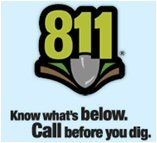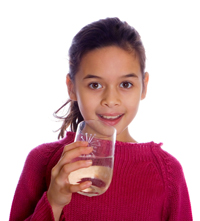Este informe contiene información importante acerca de su agua potable. Haga que alguien lo traduzca para usted, ó hable con alguien que lo entienda. (This report contains important information about your drinking water. Have someone translate it for you or speak with someone who understands it.)
We are pleased to present to you this year’s Annual Drinking Water Quality Report. We routinely monitor for constituents in your drinking water according to Federal and State Laws. The table below shows the results of this monitoring for the period of January 1 to December 31, 2024. The State allows us to monitor for some contaminants less than once per year because the concentrations of these contaminants do not change frequently. Some of our data is from prior years in accordance with the Safe Drinking Water Act. The date is noted in the sampling results table.
Our water source is 80% Delaware River water, purchased from the Bucks County Water and Sewer Authority, and 20% from wells that draw from the Stockton Aquifer and are located off Street Road and Willopenn Drive. Since July 2015, North Wales/North Penn has treated our Delaware River water source at the Forest Park Water Treatment Plant. If you have any questions about this report or concerning your water utility, please contact Barbara O’Neill at 215-364-1390. We want our valued customers to be informed about their water utility. If you want to learn more, please attend any of our regularly scheduled meetings. They are held on the fourth Monday.
In order to ensure that tap water is safe to drink, the U.S. Environmental Protection Agency (EPA) and Pennsylvania Department of Environmental Protection (DEP) prescribe regulations that limit the amount of certain contaminants in water provided by public water systems. The U.S. Food and Drug Administration (FDA) and DEP regulations establish limits for contaminants in bottled water that must provide the same protection for public health.
Drinking water, including bottled water, may reasonably be expected to contain at least small amounts of some contaminants. The presence of contaminants does not necessarily indicate that the water poses a health risk. More information about contaminants and potential health effects can be obtained by calling the Environmental Protection Agency’s Safe Drinking Water Hotline (800-426-4791).
What’s In My Water?
In the summary table, you may find many terms and abbreviations with which you may not be familiar.
To help you better understand these terms and abbreviations, we have provided you with the following definitions:
Action Level (AL) – The concentration of a contaminant which, if exceeded, triggers treatment or other requirements which a water system must follow.
Maximum Contaminant Level (MCL) – The highest level of a contaminant that is allowed in drinking water. MCLs are set as close to the MCLGs as feasible using the best available treatment technology.
Maximum Contaminant Level Goal (MCLG) – The level of a contaminant in drinking water below which there is no known or expected risk to health. MCLGs allow for a margin of safety.
Maximum Residual Disinfectant Level (MRDL) – The highest level of a disinfectant allowed in drinking water. There is convincing evidence that addition of a disinfectant is necessary for control of microbial contaminants.
Maximum Residual Disinfectant Level Goal (MRDLG) – The level of a drinking water disinfectant below which there is no known or expected risk to health. MRDLGs do not reflect the benefits of the use of disinfectants to control microbial contaminants.
Minimum Residual Disinfectant Level (MinRDL) – The minimum level of residual disinfectant required at the entry point to the distribution system.
Level 1 Assessment – A Level 1 assessment is a study of the water system to identify potential problems and determine (if possible) why total coliform bacteria have been found in our water system.
Level 2 Assessment – A Level 2 assessment is a very detailed study of the water system to identify potential problems and determine (if possible) why an E. coli MCL violation has occurred and/or why total coliform bacteria have been found in our water system on multiple occasions.
Treatment Technique (TT) – A required process intended to reduce the level of a contaminant in drinking water.
Mrem/year = millirems per year (a measure of radiation absorbed by the body)
pCi/L = picocuries per liter (a measure of radioactivity)
ppb = parts per billion, or micrograms per liter (μg/L)
ppm = parts per million
ppq = parts per quadrillion, or picograms per liter
ppt = parts per trillion, or nanograms per liter (ng/L)
This report shows our water quality and what it means. If you have any questions about this report or concerning your water utility, please contact our General Manager, Barbara O’Neill, in the municipal office at 215-364-1390. We want our valued customers to be informed about their water quality. If you want to learn more, please attend our regularly scheduled monthly meetings. They are held on the fourth Monday of every month at 6:30 pm in the Authority Building, 945 Street Road, Southampton, PA.
| Chemical Contaminants |
| Nitrate (ppm) | 10 | 10 | 2.725 | 2.38–3.07 | 04/04/24 | N | Runoff from fertilizer use |
| Cyanide (ppb) | 200 | 200 | 12 | 12 | 04/04/24 | N | Discharge from steel/metal factories; discharge from plastic and fertilizer factories |
| Iron | N/A | N/A | 0.025 | 0–0.03 | 2024 | N | — |
| Haloacetic Acids (HAA5) (ppb) | 60 | n/a | 16.51 | 8.88–26.8 | 10/23/24 | N | Byproduct of drinking water disinfection |
| Trihalomethanes (TTHMs) (ppb) | 80 | n/a | 25.55 | 5.89–69.3 | 10/23/24 | N | Byproduct of drinking water chlorination |
| Manganese | N/A | N/A | 0.039 | 0.026–0.05 | 2024 | N | — |
| PFOS | 18 | 14 | 6.02 | 2.2–13.2 | 2024 | N | Discharge from manufacturing facilities and runoff |
| PFOA | 14 | 8 | 11.2 | 7.9–14 | 2024 | N | Discharge from manufacturing facilities and runoff |
| Gross Alpha (pCi/L) EP 101 | 15 | 0 | 2.23 | N/A | 01/12/23 | N | Erosion of natural deposits |
| Combined Radium (pCi/L) | 5 | 0 | 1.44 | N/A | 01/12/23 | N | Erosion of natural deposits |
| Gross Alpha (pCi/L) EP 103 | 15 | 0 | 2.6 | N/A | 01/09/20 | N | Erosion of natural deposits |
| Chlorine EP 101 (ppm) | 0.4 | 1.63 | 1.63–2.99 | 04/15/24 | N | Water additive used to control microbes |
| Chlorine EP 103 (ppm) | 0.4 | 1.63 | 1.63–2.99 | 04/15/24 | N | Water additive used to control microbes |
| Chlorine | 4.0 | 2.32 | December | N | Water additive used to control microbes |
| Copper (ppm) | 1.3 | 1.3 | 0.369 | 0 of 24 | 2022 | N | Corrosion of household plumbing |
| Lead (ppb) | 15 | 0 | 0 | 0 of 24 | 2022 | N | Corrosion of household plumbing |
The PA Department of Environmental Protection (PA DEP) completed a source water assessment of our sources in 2005. The assessment found that our sources have little risk of significant contamination overall. The summary report can be found online at PA DEP Water Source Summary Report.
The sources of drinking water (both tap water and bottled water) include rivers, lakes, streams, ponds, reservoirs, springs, and wells. As water travels over the surface of the land or through the ground, it dissolves naturally-occurring minerals and, in some cases, radioactive material, and can pick up substances resulting from the presence of animals or human activity. Contaminants that may be present in source water include:



